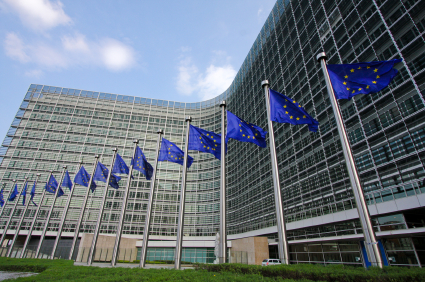Euro US Dollar Exchange Rate Drops after ECB Reiterates Plans to Ease QE
The Euro US Dollar (EUR/USD) exchange rate is facing headwinds today as the European Central Bank (ECB) echoed previous plans to decelerate quantitative easing.
At the time of writing, the EUR/USD exchange rate is trading at around $1.0798, roughly down 0.9% from today’s opening levels.
Euro (EUR) Loses Ground Following ECB’s Dovish Forward Guidance
The Euro (EUR) is falling against the majority of its peers this afternoon after the ECB concluded its latest policy meeting.
The ECB has confirmed interest rates will increase ‘some time’ after bond purchases end, while reiterating its quantitative easing programme will close in the third quarter.
The ECB statement read:
‘The Governing Council judged that the incoming data since its last meeting reinforce its expectation that net asset purchases under the APP should be concluded in the third quarter.
‘Any adjustments to the key ECB interest rates will take place some time after the end of the Governing Council’s net purchases under the APP and will be gradual.’
This comes as a disappointment to EUR investors, who had hoped the recent surge in Eurozone inflation may have persuaded the ECB to accelerate the tightening of its monetary policy.
ECB President, Christine Lagarde, has suggested the central bank may hold off hiking rates in the near-term.
In response, rate hike bets have diminished, and this is weighing on demand for the single currency.
Although some doves believe the high inflation is a result of supply chain bottlenecks and will naturally reduce overtime, many hold the Ukraine crisis responsible.
Russia is gearing up for a fresh offensive in eastern Ukraine after Vladimir Putin stated peace talks between officials had come to a ‘dead end’.
US Dollar (USD) Rises on EUR Weakness
The US Dollar (USD) is climbing against the Euro (EUR) in response to the single currency’s weakness.
Furthermore, US retail sales in March increased by 0.5%; though down from February’s 0.8% and missing forecasts of 0.6%.
Gas stations were responsible for the biggest increase with 8.9%; gains were also witnessed at general merchandise stores, electronics and appliances stores, and sporting goods and musical instruments.
Christopher Rupkey, chief economist at FWDBONDS in New York said:
‘Economic growth remains positive, but at the end of the first quarter, there are signs the consumer is increasingly tired with most of their pay checks going to put gas in the car.
‘Workers are finding their pay checks don’t go as far to meet expenses when inflation is raging out of control.’
This upside in the US Dollar is also being supported by the publication of the University of Michigan’s consumer sentiment index, which reported an unexpected improvement in sentiment this month.
Euro US Dollar Forecast: Will Russia-Ukraine War Dominate Trading Sentiment?
Looking ahead the Euro US Dollar exchange rate is likely to be influenced by the situation in Ukraine.
Due to the Eurozone economy’s sensitivity to the conflict, if negotiations remain at a stalemate, it is likely to weigh on the single currency.
On the data front, the US industrial production for March is expected to fall marginally from 0.5% to 0.4%. Should this print true, it may hinder the US Dollar’s potential.
Meanwhile, due to an absence of economic data and thin trading conditions as a result of the long Easter weekend, the Euro will remain exposed to geopolitical developments and external factors.



